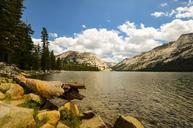Introduction
Art has an uncanny ability to transcend time and space, allowing us to communicate emotions that words alone cannot capture. One of the richest sources of inspiration for artists across genres is nature itself. From the majestic mountains to the delicate petals of a flower, nature offers endless opportunities for creative expression. In this article, we’ll explore how different artistic choices can encapsulate the essence of nature, focusing on various art forms—from aesthetic photography and self-portrait photography to abstract wall art and decorative art prints.
Nature as Muse: Capturing Its Essence through Artistic Choices
When we think of nature as a muse, we envision artists wandering through forests or standing atop cliffs, sketchbook in hand. But how do these experiences translate into art? The answer lies in artistic choices—decisions regarding composition, color palette, and technique that ultimately shape how nature is represented in visual art.
For instance, aesthetic photography captures moments of beauty that may otherwise go unnoticed. By focusing on light and shadow, photographers can evoke feelings tied to specific environments or times of day. Similarly, self-expression in art allows individuals to infuse their personal narratives into natural landscapes. By melding personal history with external beauty, artists create a dialogue between the viewer and the piece.
Exploring Various Art Forms Inspired by Nature
1. Aesthetic Photography: The Visual Symphony
Aesthetic photography serves as a bridge between reality and imagination. By utilizing techniques such as selective focus and natural lighting, photographers can transform ordinary scenes into breathtaking works of art.
Techniques Used:
- Natural Lighting: Morning and evening light often provides golden hues that enhance colors. Composition: Using the rule of thirds can lead to more engaging photographs. Post-Processing: Editing software allows for subtle enhancements without losing authenticity.
2. Self-Portrait Photography: Personal Narratives in Nature
Self-portrait photography invites artists to place themselves within the landscapes they love. This form serves as both a reflection of identity and an exploration of one's connection to nature.
Components to Consider:
- Location Selection: Choosing locations that resonate personally enhances emotional depth. Pose and Expression: How one presents themselves can convey various moods—from joy to contemplation.
3. Contemplative Photography: A Mindful Approach
Contemplative photography emphasizes mindfulness in capturing images. It encourages artists to slow down and truly observe their surroundings before snapping a picture.
Benefits:
- Promotes deeper connections with nature. Leads to more thoughtful compositions that reflect inner states.
Art Techniques Influenced by Nature
4. Fine Art Photography: Elevating Natural Beauty
Fine art photography transforms everyday scenes into stunning visuals worthy of https://jsbin.com/tijiwupuye gallery walls. By treating photographs as artworks rather than mere documentation, photographers explore deeper meanings associated with their subjects.
Key Elements:
- Storytelling through imagery. Use of vibrant colors or monochromes based on thematic relevance.
5. Abstract Portraits: Breaking Conventional Boundaries
Abstract portraits challenge traditional notions by distorting forms or using unconventional colors inspired by natural elements like water or foliage.
Execution Tips:
- Experiment with different mediums—paint, digital manipulation, or mixed media.
Artistic Choices Reflecting Identity in Art
6. Faceless Portraits: Anonymity Meets Emotion
Faceless portraits strip away identity markers while still evoking emotion through posture or color schemes inspired by nature's palette.
Techniques for Creation:
- Use silhouettes against captivating backgrounds.
Interior Design Meets Artistic Expression
7. Home Interior Design: Infusing Nature’s Essence
Bringing artistic expressions inspired by nature into home decor not only enhances aesthetics but also creates calming atmospheres conducive to mindfulness.

Design Ideas:
- Incorporate large canvases featuring landscape photography. Utilize decorative art prints that reflect natural themes for stylish wall decor.
8. Everyday Spaces in Art: Making Nature Part of Daily Life
Integrating artwork depicting natural scenes into everyday spaces transforms mundane areas into realms filled with inspiration.
Visual Storytelling Through Nature-Inspired Art
9. Emotional Reflection in Art: Telling Stories Without Words
Every piece created holds a story—whether it's about joy found in blooming flowers or solitude felt during a forest walk—inviting viewers to interpret these narratives through their lenses.
FAQs
What types of photography best capture nature?
A combination of aesthetic photography and fine art photography showcases nature beautifully while telling compelling stories through visuals.
How can I use self-expression in my artwork?
Consider integrating personal elements from your life into landscapes you enjoy; this adds depth and meaning beyond surface beauty.
What are some techniques for creating abstract portraits?
Explore digital manipulation techniques or traditional painting styles while experimenting with colors reflective of natural elements like earth tones or ocean shades.
How does interior design incorporate nature-inspired art?
Use large canvases or decorative prints showcasing landscapes or flora; these pieces can serve as focal points within your space while promoting tranquility.
What are faceless portraits?
These artworks focus on body language and color rather than facial features; they evoke emotion without revealing identity specifics.
How important is color palette in design?
Color plays a crucial role; selecting hues inspired by nature can influence mood significantly within any space.
Conclusion
In conclusion, “Nature as Muse: Capturing Its Essence through Artistic Choices” opens up avenues for creative exploration that speaks directly to our emotions and experiences with the world around us. Whether it’s through aesthetic photography that captures fleeting moments or abstract portraits that challenge our perceptions—nature continues to inspire artists everywhere.
By understanding how artistic choices shape our interpretation of the environment, we not only enhance our creativity but also foster deeper connections with ourselves and our surroundings—a journey well worth embarking upon!